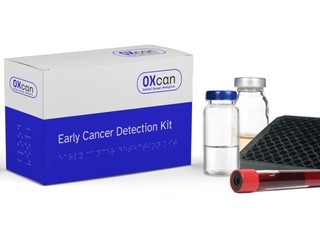 Aaron Patzer, CEO of MINT.com, dropped by The Funded and Vator.tv‘s Juice Pitcher tonight to share some secrets of the company’s success. (Just in case you don’t plug the TechCrunch feed directly into your brain stem: MINT is the wildly successful, soon-to-be-acquired-by-Intuit, #1 personal finance site…and oh yes, full disclosure that First Round Capital is a thrilled investor.)
Aaron Patzer, CEO of MINT.com, dropped by The Funded and Vator.tv‘s Juice Pitcher tonight to share some secrets of the company’s success. (Just in case you don’t plug the TechCrunch feed directly into your brain stem: MINT is the wildly successful, soon-to-be-acquired-by-Intuit, #1 personal finance site…and oh yes, full disclosure that First Round Capital is a thrilled investor.)
Everyone knows that MINT has a great product, but few know the
strategic moves. To the point, what did it take to get there? How much
did it cost to get started? When and how was it smart to raise money
such that both the founder and the investors walked away happy? Aaron
opened up MINT.com’s books – and his old slide decks – tonight to share
some shockingly frank details with the startups in attendance. Even
more generously, he was happy to have his lessons be blogged for a more
public audience:
The straight shot: Why should you raise money, and how much?
- Step 1: When you’re ready with an Idea: Raise $100K from friends and family, and use it to build a prototype.
- Step 2: Once the prototype is done: Raise < $1M in seed capital, and get into market with an alpha launch.
- Step 3: After that initial launch has traction: Raise $5-10M, and use it to prove/scale the model.
Garage Phase: What are the costs and milestones?
Here’s how MINT spend its $100K of garage money:
- Founders: $30K/year living expenses
- Engineering 1st hires: $30-50K/year
- Office: $400/cube/month
- Tech: $10K
- Legal: Deferred payments for 0.50 – 0.75% of company
Roughly, 2 founders + 1 engineer/contractor = $150K/year burn. This
gives you 6 – 9 months of runway before you need to raise a seed round.
In order to get that seed round, you’ll need to understand your
competition, and come up with projections. Everyone knows this will
change…but you need to show your thinking around it anyway. As an
example, MINT originally projected $30/user/year for lead-gen and CPA.
(Aaron noted that the company is pretty close to this today. But this
is the exception rather than the rule.) Know how the business model
works. People do X behavior and it turns into $Y income, add up those
$Ys and it’s a $Z business. If you can walk people through these
assumptions convincingly, you’ll get that seed round.
Seed Round: What are the next costs and milestones?
- Salaries: $50 – 90K/year ($450K/year for 5 people)
- Overhead: +20% ($100K/year)
- Legal: $25K + $2K/month ($50K/year)
MINT.com raised $750K in its seed round to cover these expenses for
12 months, which is about how much time you’ll need to develop into the
Series A stage.
What model do you build next in order to raise the Series A? Testing
and learning from your seed model, show user growth, retention, COGS,
revenue per sale/user, and profit. The accumulated loss is how much you
need to raise, and a well-though funding strategy combined with an
understanding of (hopefully good) business economics is what will speed
the Series A process along.
Series A: Now what?
- Salaries + Overhead: $200K/year/person
- COGS: Varies, but even one-time expenses magically add up to $150K/month
- Legal: $10-50K/month
Total burn for a 30-person team: $6M/year. Naturally you don’t start
out burning this much, as it takes time to grow the team. However the
numbers work out, your goals should be the same: Get profitable within
2 years. Raise the capital you need to do this without much
distraction.
If you want to raise more after this in order to grow more
aggressively or extend otherwise, your success in achieving those first
two goals will speak for itself.
(Image source: images.businessweek)















